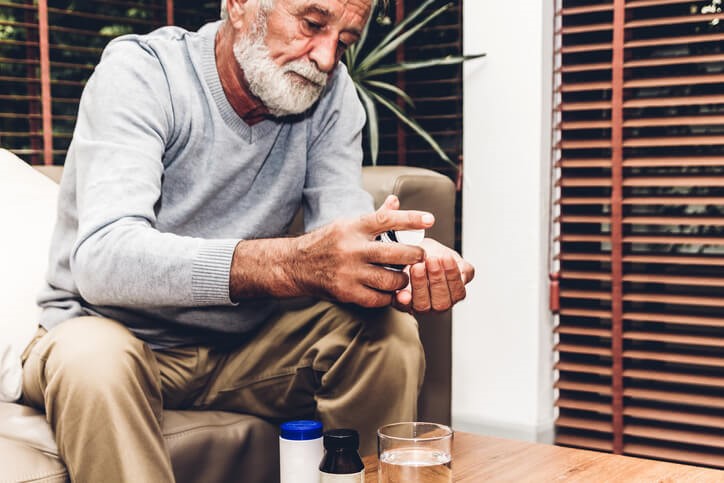Breaking down BPH treatment options
- Category: Urology
- Posted On:

June is Men’s Health Month! At West Jefferson Medical Center, we’re celebrating by sharing information about important men’s health issues, like BPH (aka, enlarged prostate).
What is BPH?
BPH stands for benign prostatic hyperplasia, also known as enlarged prostate.
BPH happens when prostate cells begin to multiply, causing the prostate to swell and grow larger. This enlargement can put pressure on the urethra and cause problems for urination.
In case your memories from middle school health class are a little fuzzy…
We’ll save you a Google: The prostate is a small, walnut-shaped gland found only in men. It’s located at the front of the bladder, and surrounds part of the urethra (the tube that carries urine from the bladder). The prostate is responsible for producing most of the fluid included in semen.
More: Do I have erectile dysfunction?

50% of men over 50 will experience BPH symptoms
After age 50, the likelihood increases by 10% every decade. So, it’s safe to say that BPH is pretty common.
In fact, BPH is a normal part of aging for many men. Though the exact cause isn’t known, it’s thought that increasing male sex hormones may play a role as men age.
Some of the symptoms of BPH include:
- Weak urinary stream
- Difficulty starting to urinate
- Frequent stops and starts while urinating
- Sudden urinary urgency and frequent need-to-go
- Dribbling and leaking
- Feeling like your bladder is not completely empty after urinating
- Having to get up at night to urinate (aka “nocturia”)
BPH does not cause prostate cancer…
But it’s a good idea to talk to your doctor about cancer screening anyway.
While BPH and prostate cancer are not related, they can cause some similar urinary symptoms and can sometimes occur simultaneously. Regardless of whether you have BPH symptoms or not, it’s important to stay up to date with your preventive cancer screenings as you age.
More: 8 ways to celebrate Men’s Health Month
You don’t have to “just live with it”
Good news, gentlemen: Just because BPH can be a normal part of aging, doesn’t mean you have to resign yourself to a life of rushing to the restroom.
There are many options for treating BPH and the resulting urinary problems, which can help restore your comfort levels and give you back a feeling of control. Treatment strategies include behavioral modification, prescription medication and minimally invasive surgical procedures.

Behavioral modification:
This refers to personal and lifestyle changes you can make to decrease the incidence of urinary issues caused by BPH.
Some simple modifications include:
- Reducing fluid intake a few hours before bed
- Making sure to use the restroom right before going to sleep
- Avoiding bladder irritants like spicy foods, sugary foods and drinks, caffeine, and alcohol (these foods and drinks can irritate the bladder, making urinary urgency and frequency worse)
- Limiting use of some over-the-counter medications that are known to affect the prostate and make it more difficult to urinate, including antihistamines and decongestants
Prescription medication:
Your doctor can prescribe two different types of medication to treat BPH: one variety helps to “relax” the prostate and open the urinary channel, and another works to physically shrink the prostate. Sometimes these two medications will be prescribed together.
These meds are commonly used and relatively inexpensive. They are typically taken once a day. While side effects are usually minor, it’s important to have a conversation with your doctor about what to expect. Be sure to review any other medications you currently take with your doctor, so they can watch out for any potentially problematic interactions.
Minimally invasive surgical procedures:
If behavioral modification and prescription medication hasn’t helped with your symptoms, outpatient surgical procedures are an option.
Surgery can also be a good option for men who prefer a more definitive treatment, without needing to take medication every day.
There are a few different surgical procedures available:
- Urolift: During this quick, minimally invasive procedure, your surgeon will place tiny implants into the prostate to help relieve obstruction and improve urinary flow. Many men see improvement immediately and (unlike with other prostate surgeries) rarely need a catheter in the post-op period.
- Laser Photo Vaporization of the Prostate (PVP): This minimally invasive procedure consists of high-frequency energy from a laser that is used to ablate (aka melt) prostate tissue, creating an open channel for urine to flow.
- Transurethral Resection of the Prostate (TURP): This incision-free procedure involves removing problematic prostate tissue using minimally invasive tools equipped with a tiny camera.
West Jefferson Urology is here to help
If you are dealing with the frustrating symptoms of BPH, our team of urologists is here to help you find relief. Call us at 504.308.0361 to set up an appointment or click here.